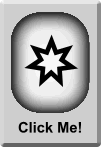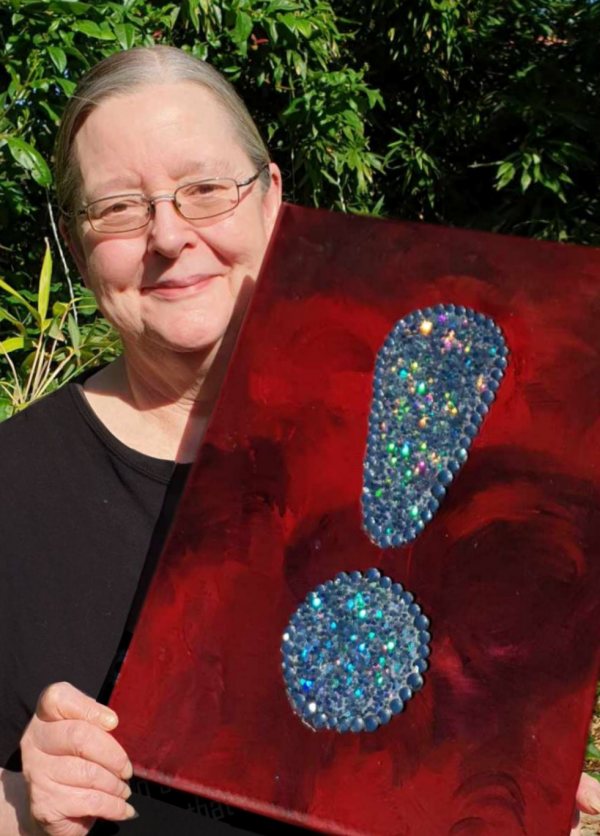The Melville Pattern -
Chaos Literature, Fractal Imagination
by Silvia Hartmann
Named after Herman Melville, proud originator of Moby Dick, the Melville Pattern is a simple yet extraordinary perceptual device which could be mistaken for a language pattern at first sight but is actually quite a bit more than that. Like many wonderful things, it can be used for good or evil depending on the mind who wields it. It can and does unlock frozen tongues, creates an instant response to absolutely anything even if you're totally unoriginal. It can make mincemeat out of writer's block, unlock an endless stream of creativity and it is so simple to do that a child could pick it up within minutes - only as it is a dangerous para-linguistic weapon, we wouldn't want to let our children near it, naturally ...
Fractal Imagination & Chaos Literature
Introducing The Melville Pattern*
Named after Herman Melville, proud originator of Moby Dick, the Melville Pattern is a simple yet extraordinary perceptual device which could be mistaken for a language pattern at first sight but is actually quite a bit more than that.
Like many wonderful things, it can be used for good or evil depending on the mind who wields it.
It can and does unlock frozen tongues, creates an instant response to absolutely anything even if you're totally unoriginal. It can make mincemeat out of writer's block, unlock an endless stream of creativity and it is so simple to do that a child could pick it up within minutes - only as it is a dangerous para-linguistic weapon, we wouldn't want to let our children near it, naturally.
Want to know what it is? How it works and how you get to do it?
Oh ok then, I'll tell ya :-)
In one of the most extraordinary sequences of near madness, HM spends a whole chapter of Moby Dick, give or take, describing a patchwork quilt.
Now you may well ask yourself how you or indeed anyone at all could possibly write what must be around 25,000 words about a patchwork quilt without repeating themselves the once, and the trick and hence named Melville Pattern is a simple yet incredible three step process.
Step 1: Describe any object in excruciating detail - and I mean in *excruciating detail*.
And I'm serious when I say ANY object. Such as a bit of rope, a cushion, a cat litter. Get close. Real close. And don't leave a single thing out.
When you think you've really got it all, think again. Look again. Focus harder. Touch it. Smell it. Get all angles, all dimensions. Look for scratches, blemishes, reflections ... Yeah see! You missed a whole lot more!
Step 2: Now, begin to muse what the object and all the object's details remind you of.
Once again, be extremely detailed and extremely specific. If you're describing a coat, don't just stop at saying about the whole thing that, "It's rough and patched, sun bleached and gun powder stained like an old army tent after 17 campaigns in the Holy Land."
Remember that:
- just the colour can remind you of one very enormous something which contains levels and levels and levels of further detail, including sea ports, lunar landscapes, cities, entire habitats with all residents, animals and all who live there (all and any aspect of all and anything right down to smallest blade of grass or hair on a rabbit's chin can then be further developed as in 1 and 2);
- the cloth, its density, thickness, structure, weave, inaccuracies, material/s should be another entire world or preferably, a separate experience/trip each;
- each button an alien planet of its own complete with radically different civilisations, beings, environments;
- or the first one reminds us of a planet; the next one of a ball that belongs to the 7 year old slightly dyslexic son of a Scottish bricklayer and an Armenian mail order bride; the next button may remind us of the tray of a waiter in an expensive French restaurant in Manchester, reflecting the Valentine's day decorations, laden with champagne, glasses for two and a single red rose in a long necked smoky glass vase and on route to Herbert (half-blind widowed stockbroker and father of three) and his fiancée May Louise (who hasn't told him yet that she had a sex change operation but will in a minute). Oh and both of them wear a coat each ... well, I think you're getting the drift.
This is indeed already, fractal literature in the finest sense and in and of itself entirely astonishing, the source of material and stories which is just like fractal art and mathematics, never ever ever ending. In fact, it is *better* than your classic fractal system because at any point at all you can switch into a different universe altogether through the use of the "what could that remind me of ..." method and zoom in afresh all through the layers and levels, time and time again - infinitely.
But now, to the true and unrivalled highlight which reveals the real genius of the Melville Pattern.
This third step and final ingredient which lifts and expands it with consummate ease into all time, all space, all purposes, all experiences and all dimensions is:
Step 3: Begin to describe in detail what the object (and all its detailed aspects) IS NOT and DOES NOT remind you of.
This is where the flood gates to creativity truly open up wide and you are basically left, if you are describing a frog, WITH THE ENTIRE UNIVERSE, the COMPLETE AKASHIC RECORDS and ALL OF TIME SPACE minus - one frog.
It is a truly endless generator and, very unlike trying to find "the one perfect" description for what something IS like or DOES remind you of, which may indeed lead to blankness and writer's block on occasion, the very act of beginning to consider what something IS NOT, COULD NEVER BE and DOES NOT remind you of is actually surprisingly natural and easy. This generates literally dozens of choices immediately and readily, even in the hands of a complete beginner.
Don't take my word for it. Try it. Pick out any old object on your desk or person and think to yourself, "What's that totally NOT like?" - see what I mean ...?
And you don't need to stop there. Indeed, in the true spirit of the Melville Pattern, that would be a howling shame. What the object doesn't remind you of becomes a perfect spring board to any details level of any environment, any kind of story, any kind of reflection, any kind of anything at all you might be wanting to talk about but previously thought you couldn't possibly logically tie into the description of someone going to bed and covering themselves with a patchwork quilt. AND, let's not forget that any aspect of any detail of any single item of any of the stories lends itself to begin to muse about what it is, what it reminds you of, and - what it isn't and what it doesn't.
As so often the case, true works of genius and breakthrough strategies like the Melville Pattern are content free and may even be applied across a whole amazingly wide span of human expression and endeavour.
Even in straightforward conversation, to be able to say, "Ah funny you should say that. That doesn't remind me at all of this joke I heard the other day about the bishop, the camel and the oyster ..." is truly a gift of priceless proportions. You'll never, ever be stuck for something to say, ever again!
Advanced users who have built up familiarity with and confidence in their execution of this pattern may indeed, choose to leave out the warm up links, such as:
- "That doesn't remind me at all of ..."
- "You know, that's completely unlike the ..."
- "How fascinating to consider the real structural differences between this and ..."
- "Interestingly, what this isn't is actually ..."
- "Honestly, this could never be the same as ..."
- "Quite right, I haven't thought about this but instead, ..."
- "Come to think of it, what you've just said has nothing to do whatsoever with ..."
Fun as though these bridges may be, you can just go straight into it.
Let me give you an example.
A (Victim): I was on holiday in Marbella last week.
B (Melville Pattern Executioner): Yeah - snowploughs. What is it with snowploughs? That weird funnel, like a dinosaur in the mist, roaring far away, you know it's there but you can't really see it, know what I mean? You're scared to death but there's nothing concrete, just the outlines in the mist and the noise and the trembling of the ground, uniquely nothing whatsoever like standing on the solid rocks of Bexhill beach on a warm day in April, eating a strawberry ice cream and carefully poking a stranded jellyfish with your toes ..."
As I said before, the Melville Pattern in and of itself is innocent.
It just is, as it were, and often as well as better still, it isn't, if you know what I mean, although this can change soon enough, as you probably wouldn't know if you weren't anyone at all but some kind of sea creature that didn't speak any of the known languages but instead, communicated in whistles and by waving its flippers about.
However, in the hands of humans who wish to do harm, take revenge for their school and childhood experiences in song, rhyme, spoken word and fiction, or those who think it their duty to scramble poor minds in the name of Captain Chaos it can be a very painful and powerful tool against which the only defence is to somehow wake up enough to walk away, fast.
It is for this reason that the Melville Pattern is restricted for professional use only and unsupervised children should never, ever, be told about it. Just imagine exactly - and I mean EXACTLY - what would happen if they found out. What that would be *like*. What that would mean. What that absolutely wouldn't, nay, couldn't mean -
.... and what wouldn't happen if you didn't ...
Brought to you courtesy of:
The StarFields Counter-Intelligence Network
Copyrighted, Researched, Modelled & Written By
Silvia Hartmann
* May contain traces of irony.
FRACTAL IMAGINATION CHALLENGE!
Find 7 different, useful applications for The Melville Pattern in every day life and including at least one creative, one problem solving and one healing application.
Escape From Melville
How To Get Out Of The Melville Fractal Chaos Literature Pattern
by Silvia Hartmann
>> So I tried the pattern and it's great - but how do you get out of it???<<<
Good question!
And it's true, I had enormous fun in answering this. So thank you for asking.
Here are a few suggestions as to what to say to get out of the Melville pattern (or any other ramble you got yourself involved in!). I'll use the same example as before.
" ... with a strawberry icecream and poking a jellyfish with your toes..."
At this point, or any other point, you just stop and say any of the following:
- <chuckles softly to self> Ah, those were the days ... Sweet memories, indeed!
- You know, I think we really can learn something from that.
- Well, can't be standing here all day, chatting and having fun!
- Anyway, after all of that ...
- But I digress.
- And there we have it, don't we!
- Still, you never know.
- It's true, I was glad it wasn't any worse than it was, in the end.
- But we mustn't grumble, its a fine day, after all.
- And that only goes to show!
- Well, to cut a long story short ...
- Anyway, going back to ...
- Really makes you wonder, doesn't it!
- Well you know what THEY say about THAT kind of thing ...
- But that's quite enough about me, what about you? (what about ...)
- <pause, sigh> You live and learn ...
- <stops, laughs> Well listen to me rambling on!
- And on this high note ...
- But leaving all of that aside for a moment ...
- Of course, it's all a matter of opinion.
- <brightly> So, that was that. What's next on the agenda?
- <sighs, shakes head> Well what can you do ...
- But of course, I can't prove any of it, it's more like a gut feeling, you know?
- And that's when I thought, better safe than sorry.
- <drifts off, pauses> Yeah ... that was really quite something ...
- <stops, laughs> Good one! (Right on/Cool, what?! etc)
- And I thought, isn't the world ONE amazing place.
- But all jokes aside for a minute.
- <nods seriously> And it makes perfect sense ... doesn't it.
- But you tell THAT to <an estate agent, a woman, a priest, the young of today etc> and they just wouldn't have a clue!
- And that, as they say, was that.
- And there was no going back ...
- Yeah. It never rains, it pours.
- And if you really think about it <shakes head, lets sentence drift off>
- And the most amazing thing is, at the time I didn't understand the half of it!
- And you don't have to have a degree for THAT!
- But then I realised that its not too late and - look, here we are!
Please note that ...
All of these:
- are totally content free and can be used anytime, anywhere, no matter what.
- leave the "other" in a state of ... what?
- can be combined with touch and/or gesture anchors.
Some of these (WHICH ones?):
- can be run on into a whole new and completely unrelated Melville sequence;
- can be improved immeasurably by the addition of tag questions;
- are perfect "subject changers" in any form of communication.
"Get Out Sentences" by Silvia Hartmann (with assistance from Jamie and LA) 2002
Melville Challenge 2: How deep can you get with the original pattern and how fast?
Don't speculate, try it out.
What kind of hypnosis IS this?!
And what do these "Get out sentences" DO? And what's the use of all of it?!
Answers on a postage stamp, please ...
2021 Comment: That whole Melville's Quilt thing was a Star Event, I laughed for hours at the first one, and laughed so much it hurt on Part 2 - STAR LIGHT!
But what I wanted to say as I'm here in July 2021 is that this pattern created our WHAT ISN'T THIS??? technique, which is so helpful in the context of the Power of the Positives, and general mind expansion. It's beautiful. Thank you, Mr Melville, I've put you in my Book of Stars!!!
|
 "What do we do when we get stuck? When we have no answers? When there is nowhere else to turn? We do Project Sanctuary. Of course. What else?" Silvia Hartmann
"What do we do when we get stuck? When we have no answers? When there is nowhere else to turn? We do Project Sanctuary. Of course. What else?" Silvia Hartmann










